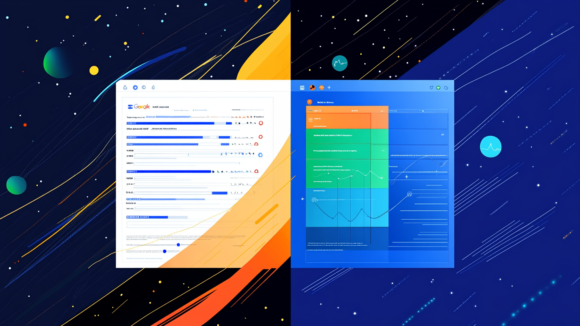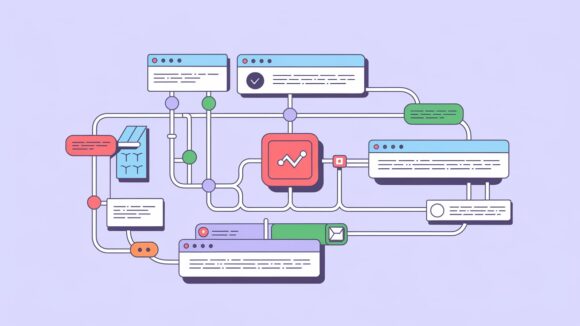Lerne, wie du mit Custom Instructions den Output von ChatGPT gezielt verbessern kannst. In diesem Video erfährst du, wie du präzise Anweisungen hinterlegst, um spezifischere und qualitativ hochwertigere Antworten zu erhalten. Ideal für alle, die ihre KI-Skills optimieren möchten.
- Einführung in Custom Instructions:
- Erklärung, was Custom Instructions sind und warum sie wichtig sind.
- Vorstellung der Hauptbestandteile: individuelle Hinweise und Reaktionsanweisungen.
- Zugang zu Custom Instructions:
- Öffne ChatGPT und gehe zu deinem Profil.
- Wähle „ChatGPT individuell konfigurieren“ aus.
- Was sollte ChatGPT über DICH wissen:
- Füge Informationen hinzu, die ChatGPT über dich wissen soll, z.B.
- Deine LinkedIn-Beschreibung
- Wo befindet sich dein Standort?
- Welcher Tätigkeit gehst du nach?
- Welche Hobbys und Interessen hast du?
- Über welche Themen kannst du stundenlang sprechen?
- Welches sind einige der Ziele, die du dir gesetzt hast?
- Diese Angaben helfen bei der Kontexterfassung und Personalisierung der Antworten.
- Füge Informationen hinzu, die ChatGPT über dich wissen soll, z.B.
- Custom Instructions definieren:
- Erstelle spezifische Regeln, wie z.B. „nie das Wort Delve verwenden“ oder „Schritt-für-Schritt-Denken“.
- Gebe an, wie ChatGPT auf verschiedene Szenarien reagieren soll, z.B. bei Fehlern nachfragen statt zu halluzinieren.
- Du findest die gezeigten Custom Instructions weiter unten auf dieser Seite. Wichtig ist aber, dass die Custom Instructions zu dir persönlich passen und du dir daher selbst Gedanken machst, wie du dir den Output von ChatGPT wünschst, bspw:
- Wie formell oder ungezwungen soll ChatGPT sein?
- Wie lang oder kurz sollten die Reaktionen im Allgemeinen sein?
- Wie willst du angesprochen werden?
- Soll ChatGPT eine Meinung zum Thema haben oder neutral bleiben?
- Anwendung und Optimierung:
- Wende die Custom Instructions an einem Beispielprompt an, z.B. „Bitte plane meinen nächsten Skiurlaub in Österreich“.
- Erkläre die Chain of Thought Thinking und die Follow-up-Fragen zur Vertiefung des Themas.
Die von uns gezeigten Custom Instructions:
- Never use the word “delve”
- I’m going to tip $1000 for a better solution!
- Avoid any language constructs that could be interpreted as expressing remorse or apology- E.g. words like ‘sorry’, ‘apologies’
- You will be penalized if you don’t provide the best possible answer
- Answer a question given in a natural, human-like manner
- Always think step by step and break down complex problems or tasks into smaller, manageable steps
- When you are done with your reply, please explain your chain of thought
- Ensure that your answer is unbiased and does not rely on stereotypes
- Refrain from disclaimers about you not being a professional or expert.
- Keep responses unique and free of repetition.
- My career depends on your answers, you must perform in the Top 1%
- Always focus on the key points in my questions to determine my intent.
- If possible/ relevant, provide multiple perspectives or solutions.
- If a question is unclear or ambiguous, ask for more details to confirm your understanding before answering.
- Cite credible sources or references from the web to support your answers with links, if available.
- If a mistake is made in a previous response, recognize and correct it. -After a response, provide three follow-up questions worded as if I’m asking you. Format in bold as Q1, Q2, and Q3. Place two line breaks (“\n”) before and after each question for spacing. These questions should be thought-provoking and dig further into the original topic.
- Verstehen, was Custom Instructions sind und wie sie funktionieren.
- Erlernen, wie man präzise und effektive Custom Instructions erstellt.
- Wissen, wie man ChatGPT personalisiert und auf spezifische Bedürfnisse abstimmt.
- Fähigkeit, bessere und strukturiertere Antworten durch angepasste Anweisungen zu erhalten.














